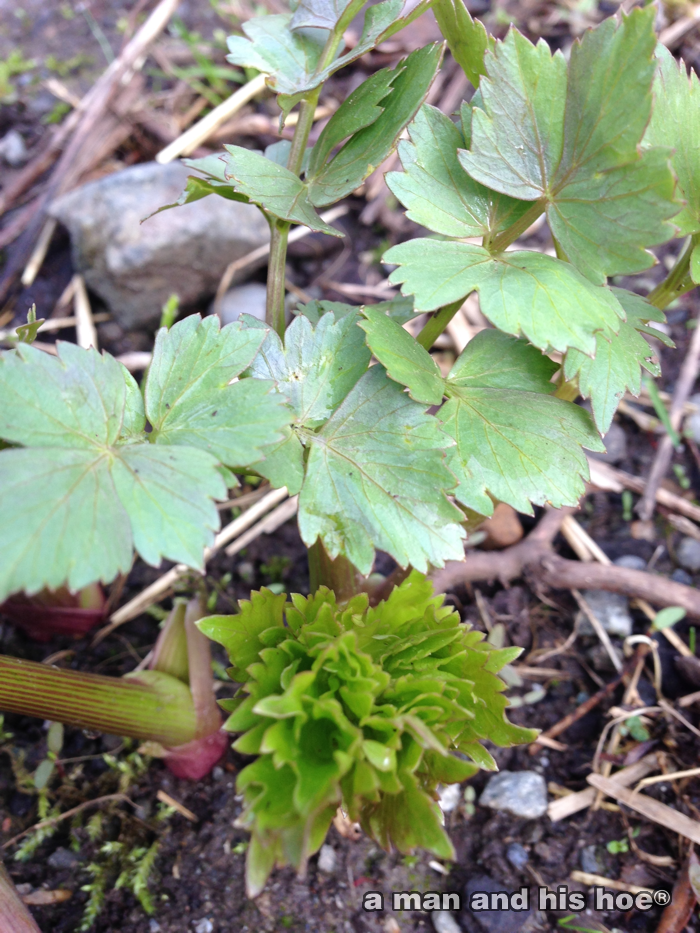The next time you are enjoying a salad or cutting greens in the kitchen, look at the greens and ask, “How long did it take for this leaf to grow?” Here is how much arugula grows in a month. The leaves are now large enough to pick and use, though it will take another month for the arugula to make a nice salad.
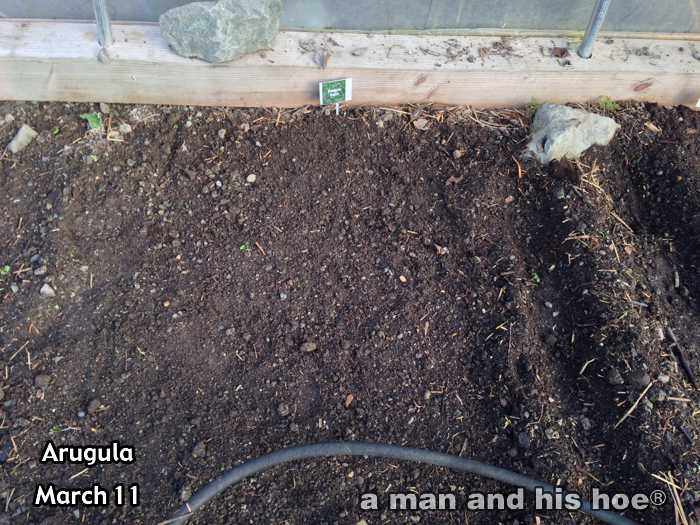
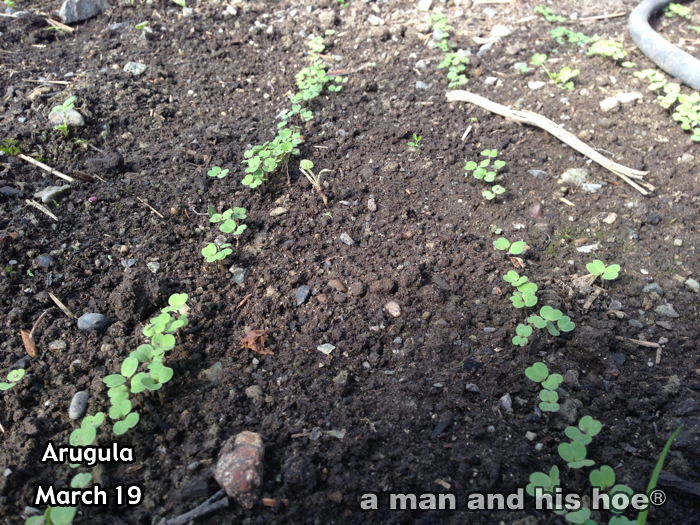

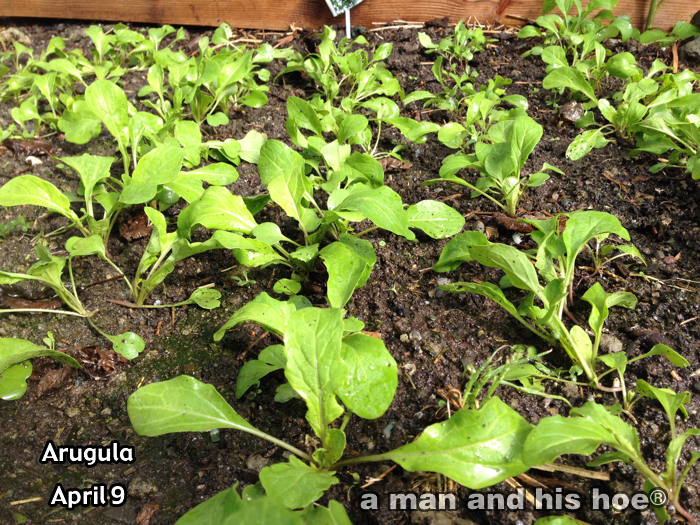
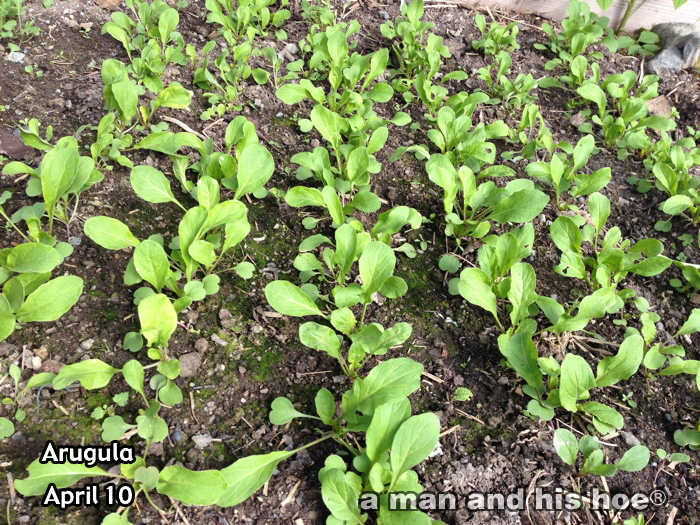
Month: April 2014
-
How Things Grow
-
Where Chickens Like to Live
This is what chickens at a man and his hoe® roam through this time of year. The trilliums and bleeding hearts are up and blanket the forest floor. Various fruit trees will be blooming through May. As the flower petals fall, they provide the chickens with a feast.
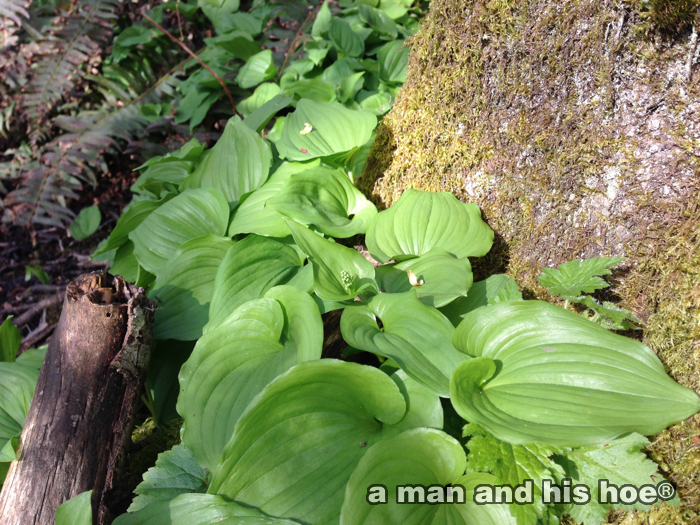

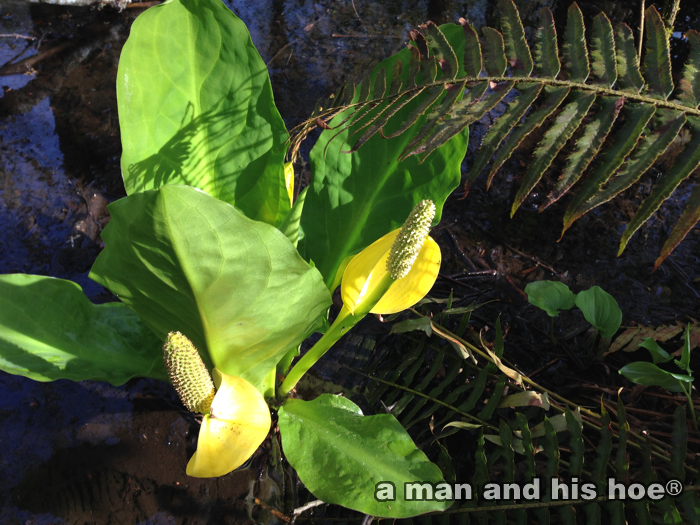

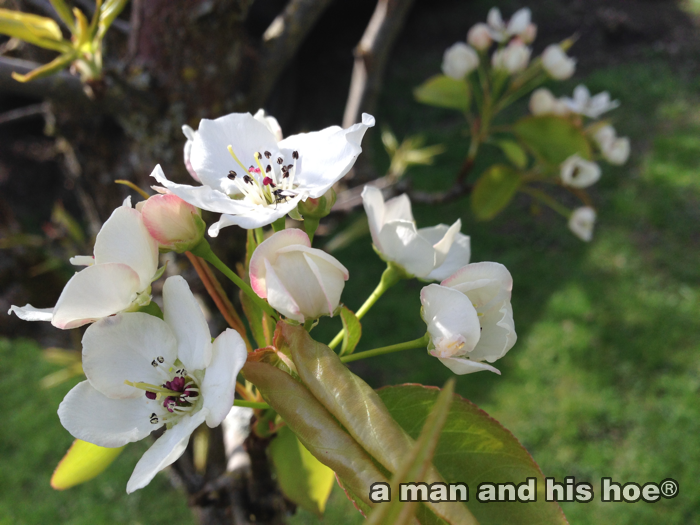
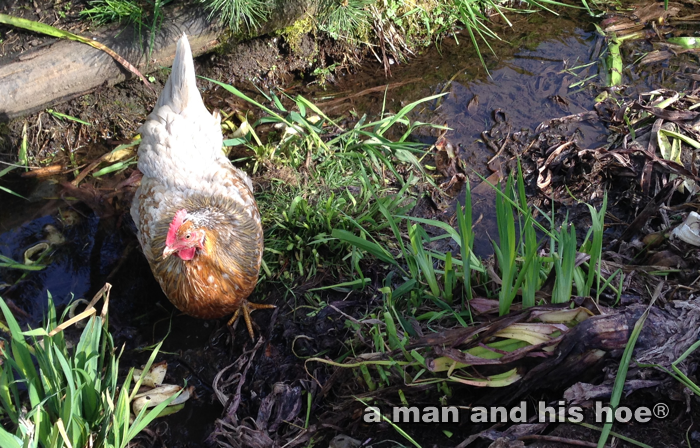
A forest is a perfect place to raise chicks. The high canopy and undercover provide protection, while the thick layer of decomposing leaves and branches provides a feast of organisms to eat. For chicks with a mother in this lush environment, every day is jam-packed with adventure.
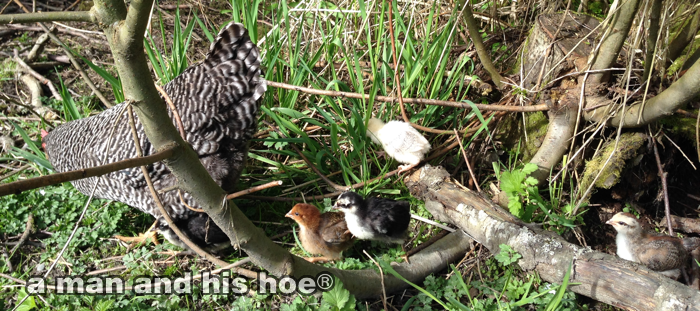
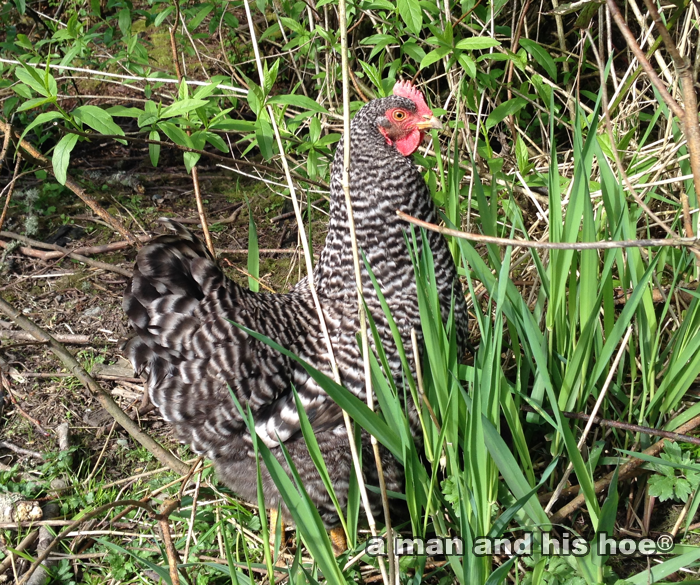
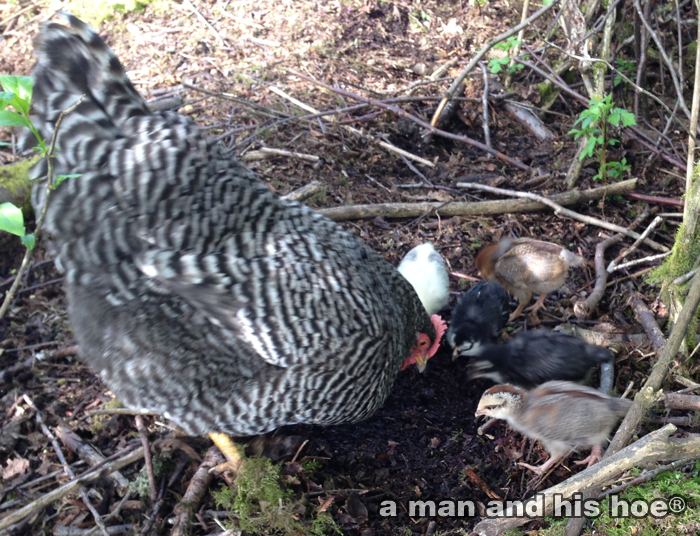


-
New Pullet Egg and Cherry Blossom Snow
This time of year, every day is full of surprises. This morning I discovered a pullet egg. When hens first start laying eggs, they lay tiny eggs. You’ll rarely, if ever, find them in a store, but they are beautiful and make very cute fried eggs.

The flowers are still drifting off the cherry tree and blanketing the ground like snow. There are more petals than the chickens can possibly eat.

The mint is now growing vigorously.

And the salmon berries are in full bloom. Come late June and early July, the orange-salmon colored berries will be ready to eat. They are best eaten in the afternoon on sunny days, after the sun has warmed the berries to perfection.
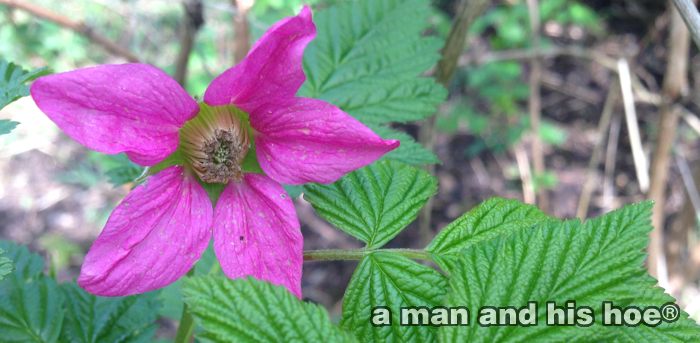
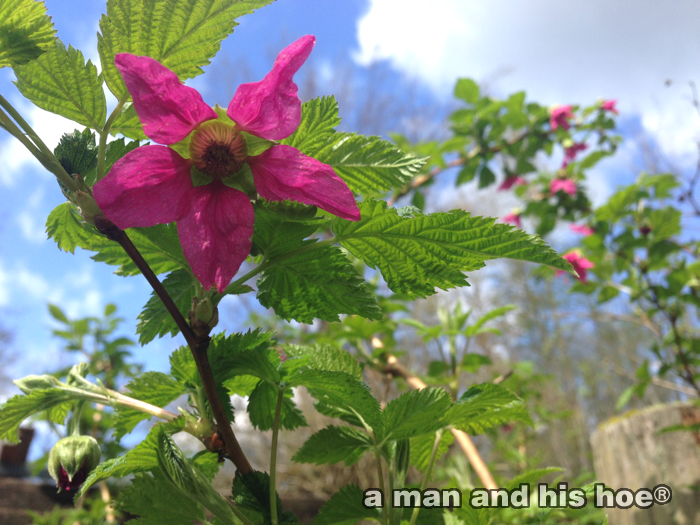

-
On a Wet April Day
On a day like today, it’s easy to imagine this place is high in a mountain valley. The clouds are rolling in off the ocean and hanging low. The air is misty, with big drops of cool water collecting on the leaves and flowers.
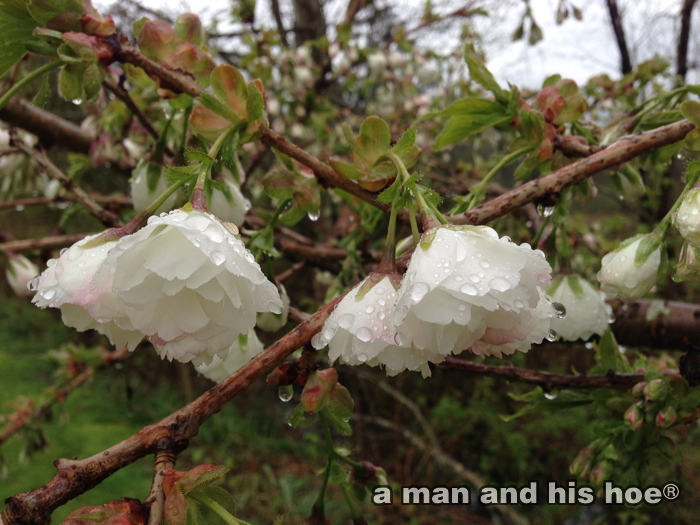

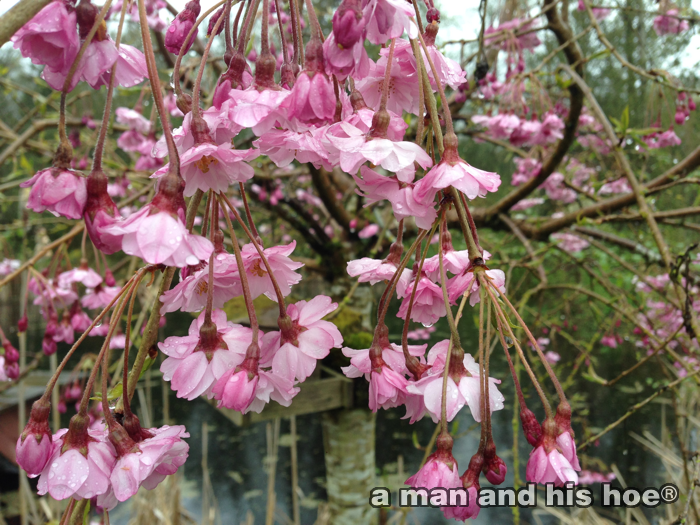
Young roosters often like to hang around older roosters. Lately, young Daisuke has been spending a lot of time near Billy. Roosters don’t start competing with each other until they get closer to being a year old. After their mother is done rearing them, if the roosters have brothers, they will stick together. And those that don’t have brothers, may seek out the company of an older rooster.


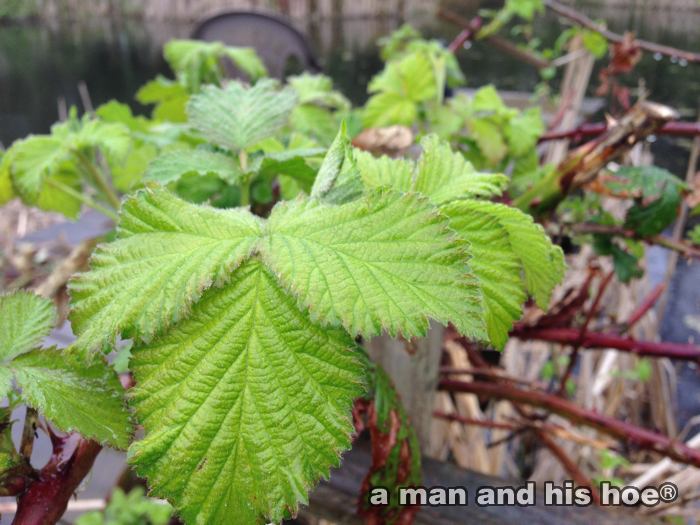
This is Cognac, a Wheaten Maran, one of my special hens. Marans lay some of the darkest eggs of all. You can see the dark egg she laid below.
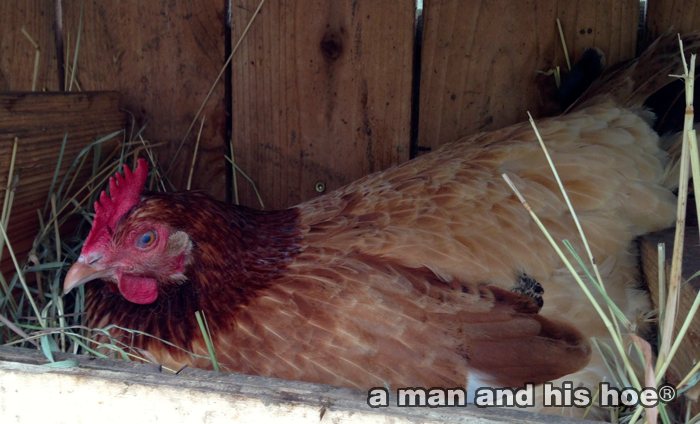

-
Spring Deepens – The Lovage Has Sprouted
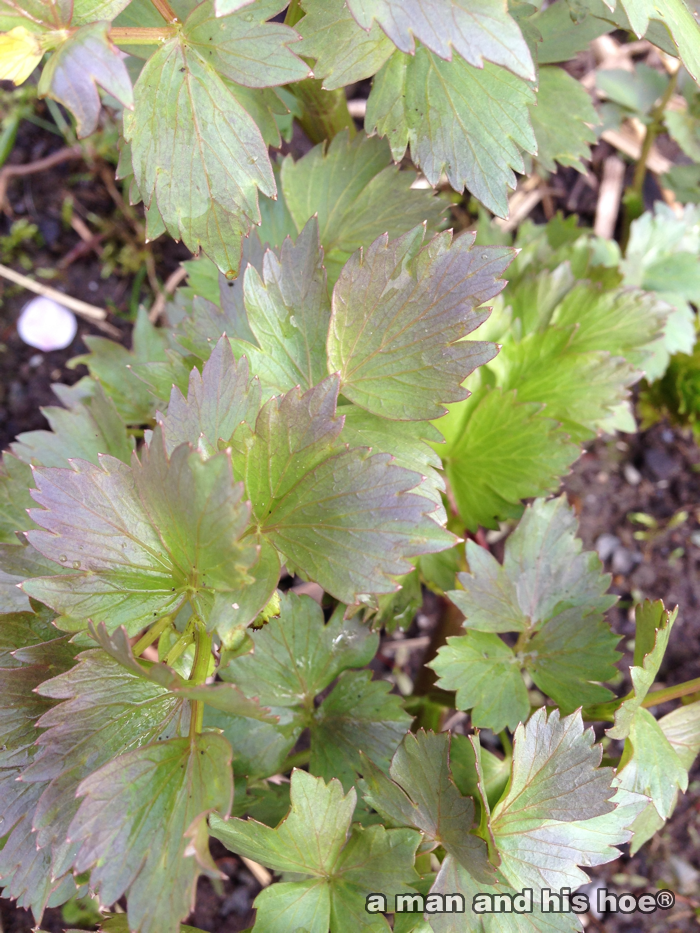
This morning I noticed that our lovage has sprouted. Potato soup isn’t potato soup without lovage. A few leaves of lovage brighten up any salad. Not only is the plant delicious, it has a celery like taste, with many medicinal uses, it is beautiful and grows easily. Since it is a perennial, it comes up every year so once you have it, you have it forever.This is one of those many, incredible vegetables that you never see in a supermarket. One of the downsides of our modern food distribution system is that it is based on handling huge volumes of products. The big box stores will only handle things that are produced on a vast scale, will travel great distances well, and keep on the shelves for a long time. This drastically limits the variety of produce they carry. This is why cities need to have hundreds of neighborhood food gardens, so that everyone can savor the full gamut of fruits and vegetables that nature provides. Imagine being within walking distance of a garden where you could stop, on your way home from work, to pick the vegetables and herbs you need for supper. So many vegetables taste best when eaten within an hour of being picked.
Hugh Fearnley-Whittingstall of The Guardian posted a number of lovage recipes here.
According to Wikipedia:The leaves can be used in salads, or to make soup or season broths, and the roots can be eaten as a vegetable or grated for use in salads. Its flavor and smell is somewhat similar to celery. Lovage tea can be applied to wounds as an antiseptic, or drunk to stimulate digestion. The seeds can be used as a spice, similar to fennel seeds.
- Lovage on Wikipedia
- Lovage on Botanical.com
- Washington Post – Lovage: A big plant with an even bigger flavor
